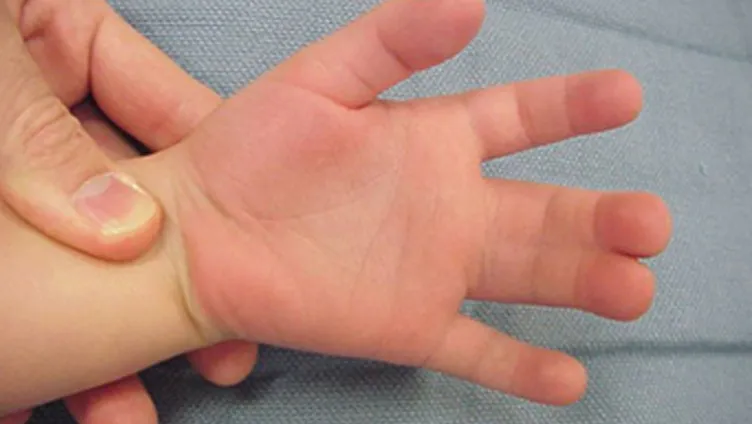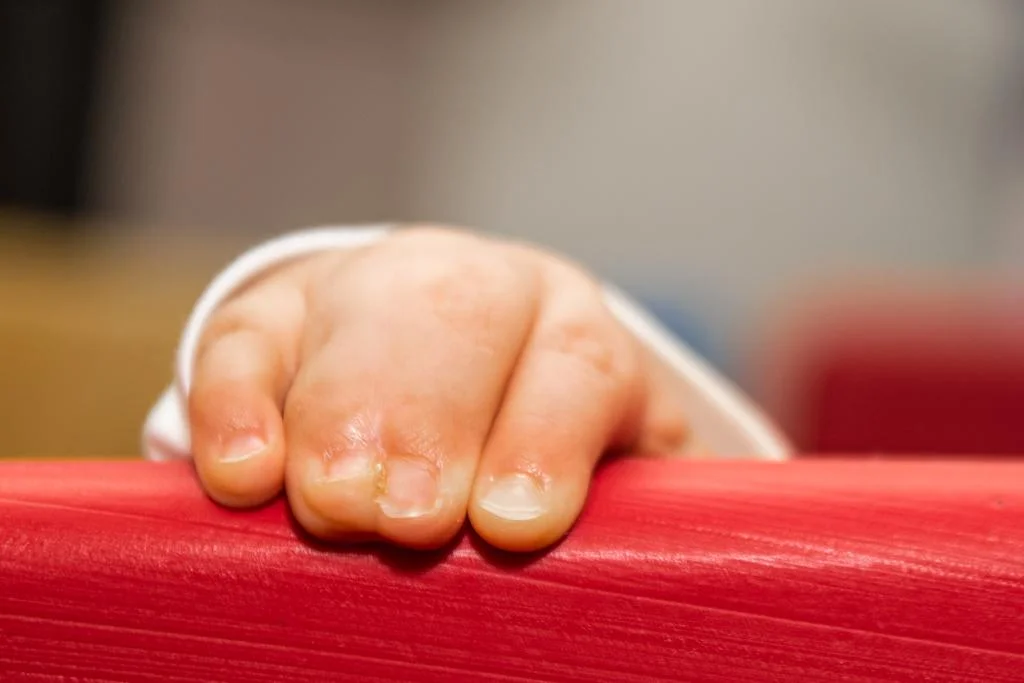Syndactyly is the condition that causes webbed or fused toes or fingers. Although researchers haven’t been able to understand the reason for this type of birth abnormality, in some cases genetic causes them. If anyone in your family was born with this condition you should talk to your doctor since you may be passing on the genetic code to your children.
What is Syndactyly?
Syndactyly is the condition in which a baby is born with webbed fingers or toes. In more than half of the cases, children have syndactyly in both hands. The 3 types of Syndactyly include simple, complex, and complicated. Simple syndactyly means the fingers are joined by skin and soft tissue. Complex syndactyly means the underlying bones are joined together. Complicated syndactyly is when there are extra bones, tendons, and ligaments.

Who does syndactyly affect?
Syndactyly can affect any newborn baby, although male babies are twice as likely to have this condition as female babies. Your child might be more likely to develop syndactyly if you have a family history of genetic disorders, especially if any of your immediate relatives were born with fused fingers or toes.
What Causes Syndactyly?
Syndactyly is caused by disruptions to your baby’s genes while they’re developing. Syndactyly develops before a baby is born. Syndactyly may run in families & has nothing to do with what a mother did or didn't do while pregnant. When a baby's hands and feet are first forming, they're shaped like mittens. Then the digits (the fingers and toes) divide. Genetic disorders can interfere with these genes, but so can environmental factors. Genetic disorders that frequently cause syndactyly include:
How Is Syndactyly Treated?
Babies with syndactyly on their hands will need surgery to separate their fingers at the age of 1 or 2 years old. A skin graft is usually performed to cover the separated digits. Your child might need to wear a splint or cast on their surgically repaired hand or foot after surgery to support their separated fingers or toes. Physical therapy can also help children regain their strength in the hand or foot after surgery. Many babies with syndactyly of the toes do not need surgery. They'll be able to walk and run well.

Syndactyly treatment surgical procedure
Syndactyly surgery usually involves a zigzag cut through the webbing along the midline point. Cutting the webbing in this way will help to prevent the scarring from interfering with healthy growth and development. Usually, skin grafts or healthy pieces of skin are transplanted to cover the top of the exposed wounds to protect them as they heal. The surgeon will usually take skin grafts from the child’s inner groin area or the back of the upper arm. Afterward, bandages or a cast will be used to protect the area from injury as it heals. In total, most surgeries to repair webbed digits take 2–5 hours.
Syndactyly surgery recovery
Your child may need to stay in the hospital for a few days following their syndactyly treatment surgery. Patients may experience some bruising, swelling, as well as nail discoloration on the toes. The cast stays on for about 3 weeks before it’s removed and replaced with a brace. Regular checkups are needed to make sure the healing process is going smoothly. In cases where web creep is occurring, which is when the webbed area continues to grow, your child may need additional surgery.
Conclusion
Syndactyly is a congenital condition where an individual is born with webbed fingers or toes. This condition primarily arises due to genetic mutations, which can either be inherited or occur spontaneously. The development of webbing between fingers or toes occurs when the digits do not separate correctly during fetal development. Syndactyly can also occur when the skin or another body structure does not heal properly after a significant injury. Treatment for Syndactyly usually involves surgical intervention, typically performed when the child is between 1 and 2 years old. The surgery involves separating the fused digits, and depending on the extent of fusion, a skin graft or a skin substitute may be used to cover the newly separated fingers. Despite the challenges it presents, with appropriate treatment, individuals with Syndactyly can lead normal and healthy lives.